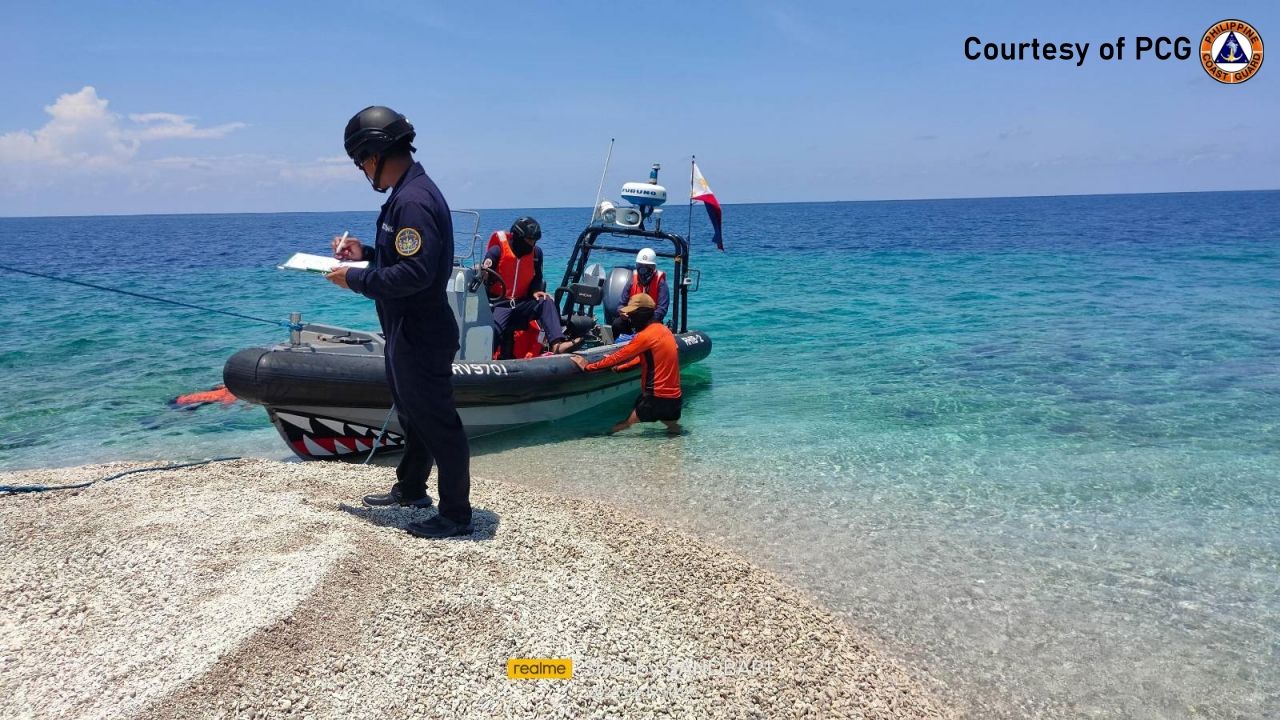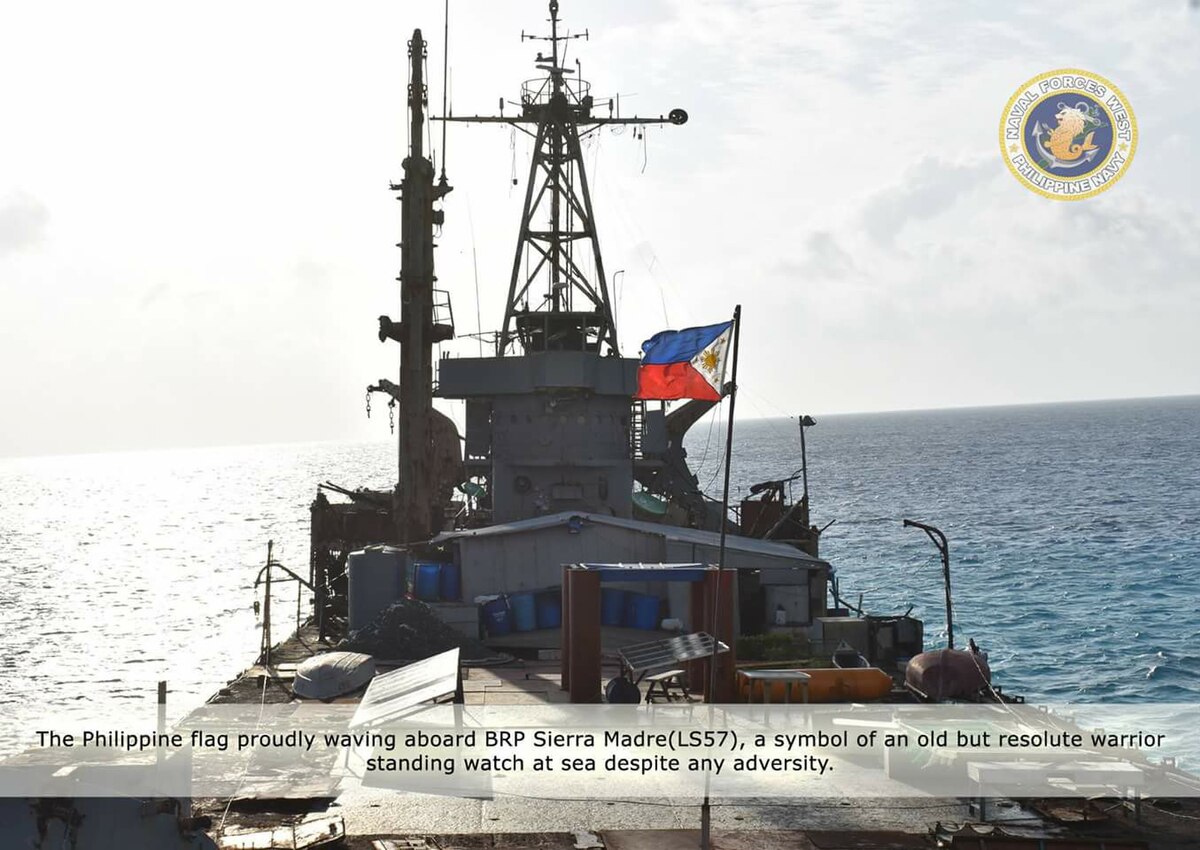Amid escalating tensions between China and the Philippines, the Philippines accused Beijing of constructing “an artificial island” in the Sabina Shoal, part of the disputed Spratly Islands in the South China Sea. The announcement made over the weekend also noted that the Philippines has sent ships to the disputed region to prevent Chinese activity.
Russia Unleashes Chinese ATVs To Fight Ukraine That Were Personally ‘Inspected & Approved’ By Putin
According to a statement from Philippines President Ferdinand Marcos Jr.’s office, the coastguard dispatched a ship “to monitor the supposed illegal activities of China, creating ‘an artificial island.” The statement added that two more vessels were stationed nearby on a rotating basis.
A spokesman for the Philippine Coast Guard (PCG) stated on May 13 that the Coast Guard was dedicated to maintaining a presence in a disputed area of the South China Sea to ensure that China did not engage in reclamation activities at the Sabina Shoal. As per the latest reports, about 40-50 Chinese research vessels have been spotted in this area.
The Coast Guard reported that since the ship’s deployment in mid-April, it had found mounds of crushed and dead coral had been deposited on Sabina Shoal sandbars, changing their elevation and size.
#SouthChinaSea Report – May 13-2024
Signs of #Chinese land reclamation in Sabina (Escoda) Shoal just 75 nautical miles (140 Km) from Palawan Island, #Philippines
If Sabina Shoal becomes another Chinese artificial island aka military base, it would help China to block the… pic.twitter.com/IA0UcQEPaZ
— Indo-Pacific News – Geo-Politics & Defense (@IndoPac_Info) May 13, 2024
The shoal, which lies inside the Philippines’ exclusive economic zone, serves as a rendezvous point for ships resupplying Filipino soldiers stationed on the Sierra Madre warship, a grounded Filipino vessel near the Second Thomas Shoal operating as a military outpost.
The warship has become a site of frequent hostility between China and the Philippines. There have been several instances where the Chinese Coast Guard ships have trained their water cannons on Filipino vessels while resupplying the grounded warship.
Another Flashpoint Between Philippines & China
A large part of the Spratly Islands lies in the Philippine Exclusive Economic Zone (EEZ), but China claims most of it as its own. The Chinese Coast Guard has often retaliated violently against Filipino vessels moving freely in the Philippines EEZ, obstructing the Philippine Coast Guard’s access to critical locations with water cannons and forceful maneuvers.
As soon as news about China’s reclamation effort broke out, netizens said on Platform X that if China were to build an artificial Island at the Sabina Shoal, it could block Filipinos from accessing the Second Thomas Shoal to supply the troops stationed on the Sierra Madre. This would essentially take away a key territory that legally belongs to the Philippines.
PCG: Nearly 50 Chinese vessels spotted in Sabina Shoal where the Chinese are in the early stages of building artificial islands since April 16. Here are some of them. (📷: PCG) @gmanews @24orasgma
1. Research vessels (1/4) pic.twitter.com/ago1ANUHRz— Joseph Morong 🇵🇭 (@Joseph_Morong) May 13, 2024
Philippines-based military analyst Miguel Miranda told EurAsian Times, “The information coming out of the Sabina Shoal is still partial but very troubling. Far from being a disputed location it’s well within the Philippines EEZ and is another hostile and unwelcome move by China in what amounts to a year of non-stop provocations. It still cannot be confirmed if there are genuine construction activities for asphalt, pavement, and housing at the shoal, but this isn’t the first time China created sand bars to form an island over ancient reefs. It’s all the more outrageous that it’s happening in Philippine territory, and the coast guard and navy would rather choose restraint than provoke another showdown.”
Miranda further added, “There’s also a broader pattern of Chinese maritime activities this year that continues a longer campaign to erase Philippine sovereignty over its own waters, such as suspicious transits of naval ships and harassment activities around Mischief Reef and Scarborough Shoal. Taken together, China has rubbished Pres. Marcos’ willingness to normalize ties and is eroding the Philippines’ borders little by little, threatening both Filipinos and their country’s natural resources.”
China’s massive land reclamation efforts on many South China Sea islands, along with the construction of air force and other military facilities, have raised concerns among other claimants, including the Philippines. Last year, for instance, satellite photos revealed that China was constructing an airstrip on Triton of the Paracel group of islands that Vietnam and Taiwan also claim.

Over the past decade, Beijing has completed land reclamation projects and construction operations at four uninhabited Spratly Island features. It was previously known to be building artificial islands at Whitsun Reef (Julian Felipe Reef), Sandy Cay, Eldad Reef, and Lankiam Cay (Panata Island) in the contested Spratly Islands of the SCS. However, by far, the Sabina Shoal is the closest to the Philippines.
The idea of more islands turning into PLA outposts threatens Manila’s security in the wake of frequent confrontations in the disputed Second Thomas Shoal. This may also unsettle the United States, which has taken a strong exception to China’s expansion in the South China Sea against the ICJ ruling.
Ben Lewis, a US-based independent analyst who keenly watches the PLA, told EurAsian Times, “As was expressed by President Obama to President Xi regarding the Scarborough Shoal in 2016, I think the idea of a Chinese base at the Sabina Shoal would be unacceptable to the United States. Manila will have full US support to protect its interests, but I think a scenario where China attempts to construct military facilities there would be a greater flashpoint than anything we have seen in the SCS so far.”

Tensions, however, have been as high and as consistently long-running between China and the Philippines in a very long time. To add insult to injury, a leaked call scandal has further set tensions soaring between the two sides.
Last week, the Chinese embassy in Manila made public a transcript of a 12-minute phone call that took place in January, during which the Philippines’ Western Command Chief, Vice-Admiral Alberto Carlos, is said to have consented to restrict Philippine supply convoys to the disputed Second Thomas Shoal.
On its part, Manila has identified the transcript as fake. Philippine officials have accused Beijing of breaking an anti-wiretapping law. The audio clip and transcript that China’s embassy provided to a small group of reporters in Manila, according to observers, may even be a work of fabrication. One analyst even went so far as to call it “deception.”
- Contact the author at sakshi.tiwari9555 (at) gmail.com
- Follow EurAsian Times on Google News





